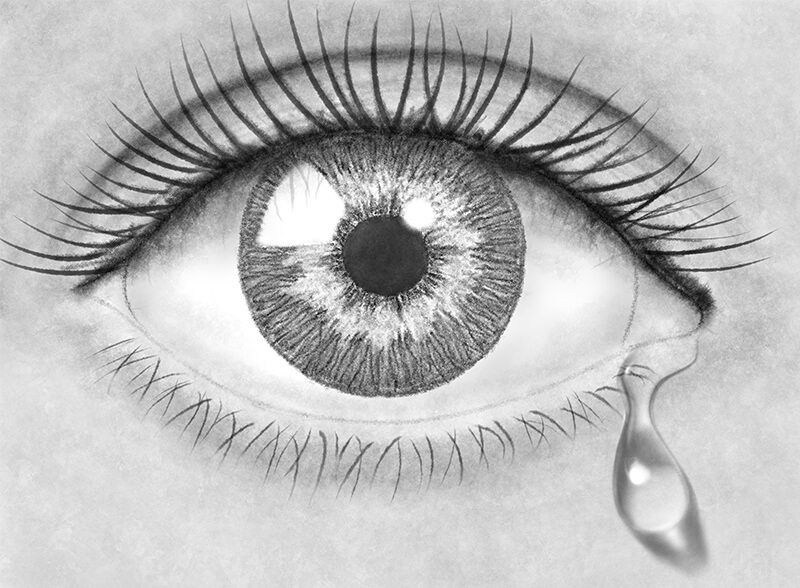What is Causing Your Watery Eyes?
Are your eyes constantly tearing up? Or are they easily irritated or inflamed? These common symptoms may be a result of watery eyes. And when left unchecked and untreated, it can be uncomfortable and may lead to more severe eye conditions. So continue reading to learn what’s causing your watery eyes.
What is Epiphora?
Epiphora, or tearing, is an eye condition that exhibits an overflow of tears. Watery eyes occur when our tears fail to drain through the tear duct and instead overflow to the face. And while tears are needed to maintain clear vision by keeping the eye’s surface healthy, too many tears can make it difficult to see. This condition is most common in children under a year old and older people, ages 60 and above.
Common Causes of Watery Eyes

Tears help protect the surface of the eye and maintain healthy vision. But, too many tears may result from a more serious condition.
Here is an overview of the primary causes of watery eyes, as well as additional information to keep in mind:
1. Blocked Tear Ducts
The tear duct, or nasolacrimal duct, aids in the drainage of tears. However, when the tear duct is underdeveloped or too narrow, this causes a blockage, and the tears cannot pass through the duct properly. Instead, the tears will collect in the tear sac. When the tear sac is full, the eye produces a sticky liquid which can put you at risk of an eye infection. It may also lead to canaliculi or narrow drainage channels. Both of which can result in swelling and inflammation.
2. Overproduction of Tears
When you experience eye irritation, you may find yourself tearing up quickly. This is your body’s natural response to remove eye irritants. Common irritants include the following:
- Dirt/sand/tiny stone stuck in the eye
- Chemical fumes (e.g., smoke, onions)
- Eye makeup
Some health conditions may also irritate the eyes, such as:
- Infective conjunctivitis – infection of the front skin of the eye; it can also spread to the other eye
- Allergic conjunctivitis – inflammation of the eye caused by allergens, like mold spores or pollen
- Trichiasis – ingrowth of the eyelashes
- Ectropion – the lower eyelids turn outward, exposing the inner skin; common in older adults
Another possible cause of the overproduction of tears is high fat or lipid profile. This condition can leave dry patches on the eyes, which then become irritated. As a normal response, the eyes produce more tears to keep them moisturized.
3. Other Possible Causes
- Dry eyes
- Allergies
- Bell’s palsy
- Blocked meibomian glands
- Some medications
- Keratitis – cornea infection
- Corneal ulcer – open sore on the eye
- Styes – painful lumps on the eyelid
What are Some Treatment Options?
If you are experiencing chronic watery eyes, here are some of the treatment options available:
- Narrow drainage channels (canaliculi) – An eye doctor will use a probe to make the drainage wider if it’s not entirely blocked yet. If it is, an operation may be necessary.
- Trichiasis – When eyelashes grow inward, an eye doctor removes them.
- Ectropion – A doctor may recommend surgery to tighten the tendon to restore the position of the outer eyelid.
- Infective conjunctivitis – You may need to take prescription antibiotics if it’s not resolved within a week.
- Blocked tear duct in babies – If your baby’s tear duct is still developing and sticky liquid is forming around his eyes, you can massage the tear ducts gently to stimulate draining. Also, you may need to clean the eyes with cotton dipped in sterile water to avoid eye infections.
Say Goodbye to Your Watery Eyes
Watery eyes may cause blurred vision, which can be dangerous when driving or doing other physical activities. It can also lead to headaches. So, if you suffer from reduced vision, pain, inflammation, or redness in your eyes, don’t ignore the symptoms. Schedule an eye exam with Looking Glass Optical as soon as possible to avoid further problems. Or, contact us today at 410-768-0202. We are happy to answer all of your questions.
Share
